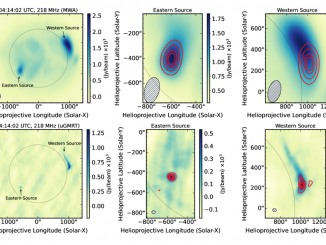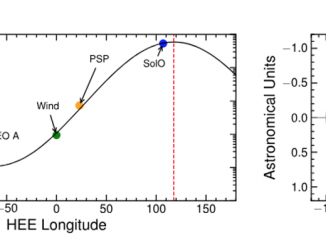First Robust Detection of Linear Polarization from Metric Solar Emissions: Challenging Established Paradigms by S. Dey et al.
Polarization measurements of solar radio emissions are key diagnostics of coronal plasma, magnetic fields, and propagation effects, and can provide additional constraints on the emission mechanisms. At meter wavelengths, circular polarization (CP) has long been exploited in solar radio studies, while linear polarization (LP) has been assumed to be absent. This view arose from the expectations that strong coronal Faraday rotation would completely depolarize LP within typical observational bandwidths and […]








